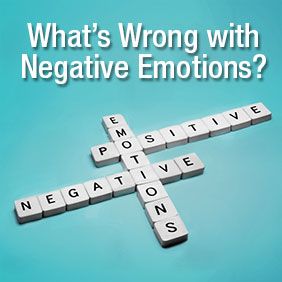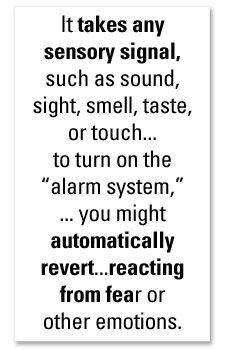Anxiety
What’s Wrong with Negative Emotions?
Categorization of emotions into positive and negative may not benefit us.
Posted June 21, 2013

Categorization of emotions into positive and negative—that is, seeing them as black and white—may not benefit us. Perhaps we can see emotions of all kinds as human experiences that give us information about ourselves. Emotions can also be a motivator for our actions and a precursor to reactions. For example, fear is supposed to warn us and help us prepare for danger, ultimately bringing us closer to safety. Anger can tell us when something feels wrong, which might give us the urge and strength to deal with an issue that we might otherwise ignore. Sadness can inform us about the pain of our loss and help us to look a little closer at it. Although they may feel uncomfortable, all of these emotions are completely normal and important. In fact, Elisabeth Kübler-Ross points out that there are five emotional stages that we all must go through in order to overcome grief; the stages are denial, anger, bargaining, depression, and acceptance. She explains that if we don’t get in touch with each feeling during each stage, we might get stuck in one of them and suffer even more.1
Sometimes emotions don’t tell us the truth. When we are stuck or triggered emotionally, our feelings might not tell us the whole truth, for example,when you are trapped in your grief and tell yourself additional stories, like Nobody will ever love me. I’ll be alone for the rest of my life. These beliefs are probably not correct, don’t serve you, and prolong your feelings of sadness. However, you might not know how to change the beliefs.
When you are scared of entering an elevator or afraid of dogs, or feel timid while driving on the freeway, you might have an overproductive fear that expresses itself through phobias or emotional roller coasters. The fear no longer tells you the truth because you are not in a dangerous situation, yet still your fear might lead you to believe that you are unsafe. This can be due to a prior trauma response that is on constant “protection replay mode.” “A trigger is anything that sets you off emotionally and activates memories of your trauma. It’s particular to you and what your experience has been.”2

Your emotions and your body are more connected than you might think. Robert Scaer explains that “feelings” have a physical cause and that physical sensations and emotional thoughts are inseparable.3 If you have been in an accident or a natural disaster, experienced abuse, or undergone any other trauma, your sensations might keep signaling your nervous system to stay in protective mode by preparing to fight, run away, or be still (fight-flight-freeze mode). It takes any sensory signal, such as sound, sight, smell, taste, or touch—but also inner conditions—to turn on the “alarm system,” and without thinking, you might automatically revert to “survival mode” by reacting from fear or other emotions.
What can you do when your emotions don’t always inform you correctly? The first step is to be aware of your emotions and become a nonjudgmental observer. If excess anxiety is a problem for you, notice when and in what circumstances you become anxious.
Being compassionate toward yourself will help you ride the wave of anxiety, for example, accepting and naming your feelings in this way: Yeah, that’s my anxiety; it’s familiar. I’ve been here before, and it won’t kill me.
Giving “negative” feelings attention and acknowledging them (without necessarily acting on them) can set them free, whereas ignoring or minimizing them, being afraid of them, or denying them will only harbor symptoms in the long run. Eugene Gendlin developed a technique called “focusing,” in which he suggests, “Don’t go into the problem,”4 but access your felt sense instead. What do you sense in your body? You might sense butterflies in your stomach when you are scared. You might feel constriction in your chest. Instead of avoiding it, he suggests to stay with it until the feelings shift. “The ‘problems’ inside you are only those parts of the process that have been stopped, and the aim of focusing is to unstop them and get the process moving again.”5
Notes:
- Elisabeth Kübler-Ross and David Kessler, On Grief and Grieving. Finding the Meaning of Grief through the Five Stages of Loss (New York: Simon and Schuster, 2007).
- Jasmin Lee Cori, Healing from Trauma: A Survivor’s Guide to Understanding Your Symptoms and Reclaiming Your Life (Cambridge, MA: Marlowe & Company, 2007), 30.
- Robert Scaer, 8 Keys to Brain-Body Balance (New York: W. W. Norton & Company, 2012).
- Eugene T. Gendlin, Focusing (New York: Bantam Dell, 1978), 201.
- Eugene T. Gendlin, Focusing (New York: Bantam Dell, 1978), 77.


